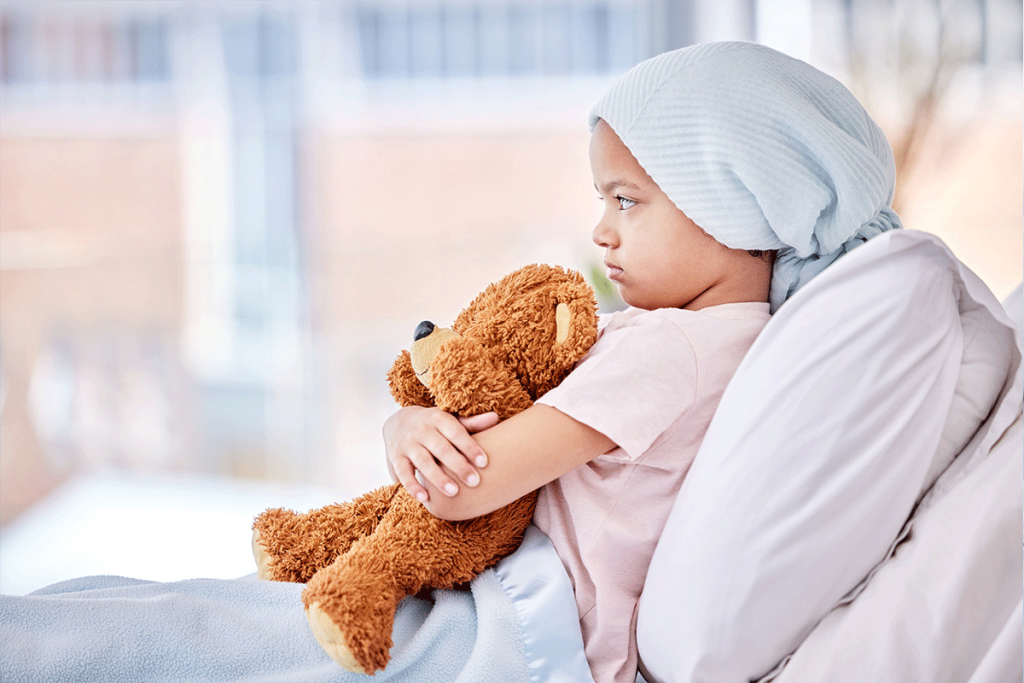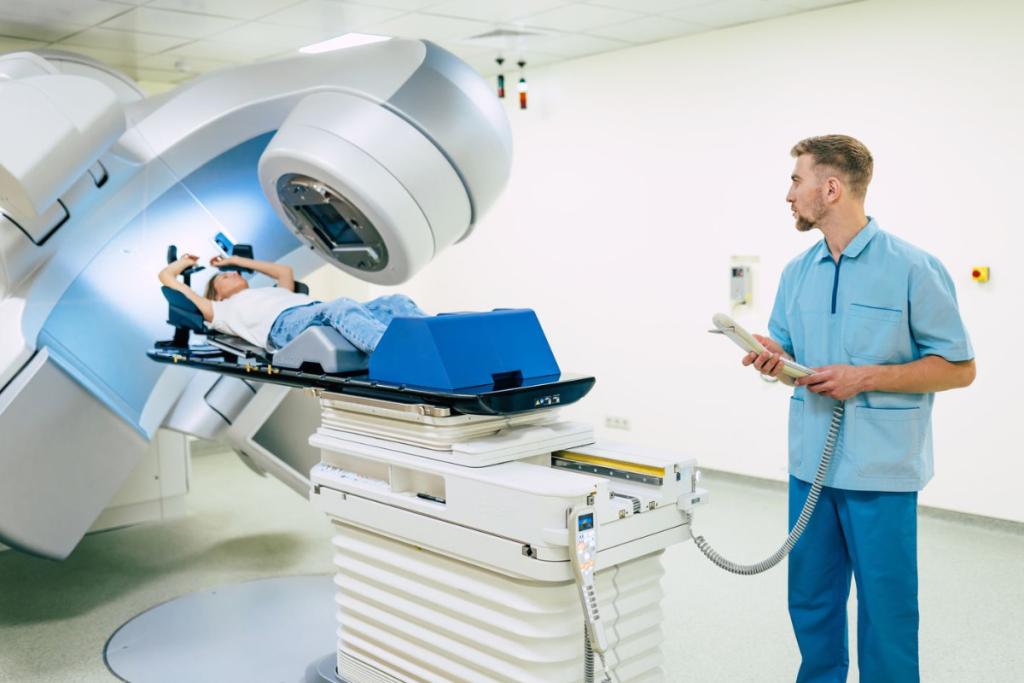Last Updated on October 20, 2025 by Batuhan Temel

Pediatric cancer, also known as childhood cancer, affects thousands of children worldwide every year. In the United States alone, more than 10,000 kids are diagnosed with cancer annually. While there is currently no single cure for pediatric cancer, significant progress has been made. Advances in medical technology and better care have led to higher survival rates. This gives new hope to families dealing with this disease.
Yet, despite these advancements, challenges and disparities in cancer cure rates remain. These issues are more pronounced between high-income and low- and middle-income countries.
Pediatric cancer is a big health problem worldwide. Every year, thousands of kids get cancer. This shows we need more research and better treatments.
Cancer in kids is rare but happens in many places. The most common cancers in kids are leukemia, brain tumors, and lymphoma. These cancers are a big part of childhood cancer cases.

Leukemia is the top cancer in kids, making up 30% of cases. Brain tumors are also common, making up 25% of cases. Lymphoma is less common but is a big threat. Knowing these numbers helps us find better treatments.
Kids get different cancers than adults. While adults often get breast or lung cancer, kids get leukemia, brain tumors, or lymphoma. Each cancer needs its own treatment plan.
Knowing the types of cancer in kids is key to better care. We must keep learning and improving treatments. This will help kids live better lives.
We are fighting hard against pediatric cancer. It’s important to know the progress and the challenges we face. Finding a cure requires deep research, new treatments, and understanding the disease well.
In pediatric oncology, a “cure” means no cancer left. A child is considered cured if they live cancer-free for five years or more after diagnosis. But finding a cure is tricky because childhood cancers vary a lot.
Each type of cancer has its own cure rate. The cure depends on the cancer’s stage and the treatment’s success. Thanks to medical science, we now know more about curing childhood cancer.
Survival rates for kids with cancer have soared in recent decades. In the U.S., the five-year survival rate has jumped from about 58% in the 1970s to over 85% today. This shows how far pediatric oncology and childhood cancer research have come.
New treatments like targeted and immunotherapies have made a big difference. These advances have changed how we treat pediatric cancer, giving families new hope.
Even with better survival rates, cancer is a top killer in kids. Some cancers are aggressive and tough to beat. Also, some kids don’t respond well to treatments, leading to cancer coming back.
Not everyone has access to top-notch healthcare, which affects survival rates worldwide. In rich countries, some cancers have cure rates over 80%. But in poorer areas, rates are much lower. This shows we need to work together to help more kids.
Managing pediatric cancer is complex. It involves using different treatments to help young patients. Thanks to new therapies, survival rates have gone up in rich countries. This brings hope to families dealing with childhood cancer.
Surgery, chemotherapy, and radiation therapy are common treatments. They can be used alone or together, based on the cancer type and stage. For example, chemotherapy fights cancer that has spread, while surgery removes tumors.
New treatments like immunotherapy are also key. They help the body’s immune system fight cancer better. This approach is getting more attention in pediatric cancer care.

Children with cancer need a multidisciplinary team of doctors and nurses. This team includes pediatric oncologists, surgeons, and radiologists. They work together to create a treatment plan that fits the child’s needs.
This team approach ensures children get the best care. It improves their survival chances and quality of life.
Knowing the cure rates for pediatric cancer is key for patients, families, and doctors. Pediatric cancer is a group of many different cancers, each with its own challenges.
Some pediatric cancers have seen big improvements in cure rates. For example, Acute Lymphoblastic Leukemia (ALL) now has a cure rate over 90% in developed countries. This is thanks to better chemotherapy and care.
Other cancers like Hodgkin Lymphoma and some Wilms Tumor also have high cure rates. These successes come from research and better treatment plans.
But sme cancers are harder to treat. DIPG (Diffuse Intrinsic Pontine Glioma), a brain tumor, is one. It’s aggressive and hard to fight.
Other tough cancers include high-risk neuroblastoma and some rare sarcomas. New treatments like targeted and immunotherapies are needed to help these cancers.
In pediatric cancer, “remission” and “cure” mean different things. Remission means the cancer is controlled, but it might come back. A cure means the cancer won’t come back.
“The goal of treatment is not just to achieve remission but to ensure long-term survival and quality of life for our young patients.”
Pediatric Oncologist
It’s important to know the difference between remission and cure. This helps set realistic hopes and make better treatment choices. Research is working to turn more remissions into cures with better, safer treatments.
Pediatric cancer treatment is a big issue worldwide. Survival rates vary greatly between countries. This shows big problems in healthcare access and treatment.
In rich countries, kids with cancer often live. Their survival rate is 80% to 90%. But in poorer areas, it’s only about 30%.
This big difference comes from many reasons. One is that not everyone can get to a hospital. Another is that some cancers are found too late. This makes treatment harder.
Limited access to care is a big problem. Families can’t afford treatment or live far from hospitals. Delayed diagnosis also hurts, as cancers are harder to treat when found late.
Many groups are trying to fix these problems. The International Society of Pediatric Oncology (SIOP) and the World Health Organization (WHO) are leading the way. They want to make sure all kids get the care they need.
They’re using different ways to help:
These efforts hope to close the survival gap. They want every child, no matter where they are, to get the best cancer treatment.
Despite big steps forward in treating pediatric cancer, finding a cure for all is hard. Childhood cancers are complex, with different traits that make treatment tricky.
Childhood cancers are different from adult cancers, with unique genes and molecules. This makes finding a single cure hard, as treatments need to be specific for each cancer type.
Genetic heterogeneity in tumors makes treatment even harder. It leads to cancer cells that don’t respond to treatment. Knowing the genetics of pediatric cancers is key to finding good treatments.
Resistance to treatment and recurrence are big problems in pediatric cancer. Cancer cells can grow resistant to drugs and radiation, causing the cancer to come back.
Recurrence patterns differ by cancer type. Some cancers come back in the same place, while others spread to other parts of the body. Knowing these patterns helps in finding better treatments.
Current treatments for pediatric cancer can cause lasting side effects. These can affect survivors’ quality of life, causing organ problems, growth issues, and a higher risk of new cancers.
Long-term follow-up care is vital for managing these side effects. It helps ensure the health and well-being of pediatric cancer survivors.
As we face these challenges in treating pediatric cancer, a broad approach is needed. We must work together to find a cure for all.
Breakthrough therapies are changing the game in pediatric oncology. They offer new hope for kids with cancer. This progress comes from hard work by scientists and researchers all over the world.
Immunotherapy is a game-changer. It uses the body’s immune system to fight cancer. Types of immunotherapy include:
These treatments are showing great promise. They offer new hope to kids and their families.
Precision medicine tailors treatments to each patient’s cancer. This makes treatments more effective.
Key aspects of precision medicine include:
This approach is improving treatment outcomes. It gives kids more personalized and effective care.
Gene therapy, including CRISPR, is a new frontier. It can edit genes to fix genetic defects that cause cancer.
Gene therapy is just starting, but it’s very promising for the future of cancer treatment in kids.
The fight against pediatric cancer is led by top research centers and their networks. These places focus on understanding and treating pediatric cancers better.
Many top research places are leading in pediatric cancer research. For example, St. Jude Children’s Research Hospital is known for its work in pediatric oncology. It offers free treatment to kids with cancer and other serious diseases.
Places like Memorial Sloan Kettering Cancer Center and Children’s Hospital of Philadelphia are also making big strides. They do innovative research that helps us understand and treat pediatric cancers better.
These centers are not just improving treatments. They’re also learning more about the genetic and molecular causes of pediatric cancers. “We aim to cure all children with cancer. We’re getting closer thanks to teamwork in research.”
Research networks are key in fighting pediatric cancer. They help share data, resources, and knowledge among institutions. The Children’s Oncology Group (COG) is a big example. It has over 200 members worldwide.
COG runs clinical trials and studies. These efforts are making treatments better for kids with cancer.
“The power of collaboration in pediatric cancer research cannot be overstated. By working together, we can accelerate the discovery of new treatments and improve survival rates for children with cancer worldwide.”
Groups like LivHospital.com support families and help treat pediatric cancer worldwide. They offer information, resources, and expert care. This helps close the gap in treatment between different places and communities.
As we keep fighting pediatric cancer, the work of research centers and networks is vital. Together, we can give kids with cancer the best care, no matter where they are or who they are.
When a child gets cancer, the whole family starts a tough journey. This journey affects their family life, money, and feelings. It’s a big challenge for everyone involved.
Families with a child who has cancer often struggle with money. They have to pay for medical care, travel, and might lose their jobs. Financial assistance programs and practical resources are key to helping them out.
Non-profit groups give grants for medical bills, living costs, and more. They also help with travel and staying near the hospital. This lets families focus on their child’s health, not the trip to treatment.
The emotional impact of cancer on families is huge. Psychological support systems are very important. They help families deal with stress, worry, and the unknown of treatment.
Support groups, online or in-person, let families share and get support. They also connect with others facing the same challenges. Many groups offer mental health services for families with pediatric cancer. This shows how important mental health is during this time.
Educational and advocacy organizations are key in raising awareness about pediatric cancer. They push for research and better policies for families. These groups give out important info on treatments, trials, and support services.
They fight for families and kids with cancer, making sure they get the care they need. They also help find better, safer treatments. This leads to better results for kids with cancer.
Looking at pediatric cancer treatment today, we see progress. New therapies and research are helping patients more. Our goal is to give top-notch healthcare and support to patients from around the world.
The outlook for cancer care is bright. Immunotherapy, precision medicine, and gene therapy are bringing new hope. We must keep innovating and support families through this tough time.
By pushing research and improving treatment, we aim for a future where every child gets the best care. We will keep supporting families and exploring new ways to fight pediatric cancer.
Pediatric cancer is cancer that happens in kids and teens, usually under 20. It’s different from adult cancer because of its biology and how it’s treated.
Common pediatric cancers include leukemia, brain tumors, lymphoma, neuroblastoma, and Wilms tumor. Each type has its own treatment.
Today, more kids with cancer are cured than ever before. In rich countries, survival rates have jumped from 58% to over 85%. But, cure rates vary by cancer type and country wealth.
Treatments for pediatric cancer include chemotherapy, radiation, surgery, and immunotherapy. The right treatment depends on the cancer type, stage, and the child’s health.
Teams of specialists are key in treating pediatric cancer. They include oncologists, surgeons, radiation therapists, and more. They work together to give kids the best care.
In poorer countries, treating pediatric cancer is tough. There’s less access to healthcare, no specialized care, and poor facilities. This leads to lower survival rates than in richer countries.
New treatments like immunotherapy, precision medicine, and gene therapy are changing pediatric cancer care. They offer hope for better outcomes and fewer side effects.
Families can find help through cancer charities, support groups, and healthcare providers. These resources help with costs and offer emotional support during treatment.
Supporting families is vital. It helps reduce stress, improves treatment success, and boosts well-being. Services like psychological support and education are very helpful.
Groups like LivHospital.com are essential. They help get kids to advanced care, support research, and offer resources and support to families and doctors.
The future looks bright for pediatric cancer treatment. Research in immunotherapy, precision medicine, and gene therapy is ongoing. Better treatments and support services will improve life for kids with cancer.
You can help by donating to cancer charities, joining fundraising events, and raising awareness. Supporting groups that help families with pediatric cancer also make a big difference.
Subscribe to our e-newsletter to stay informed about the latest innovations in the world of health and exclusive offers!
WhatsApp us